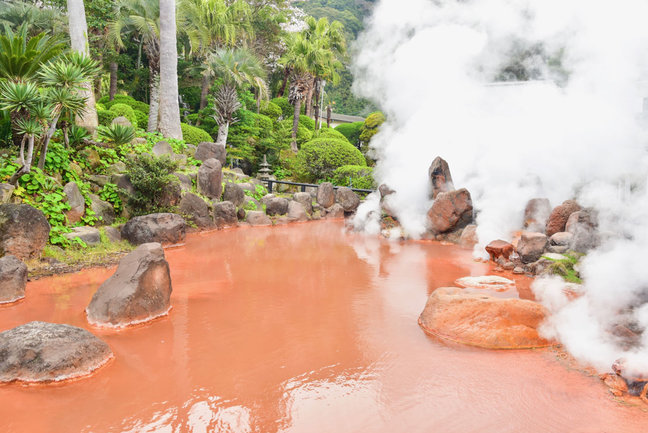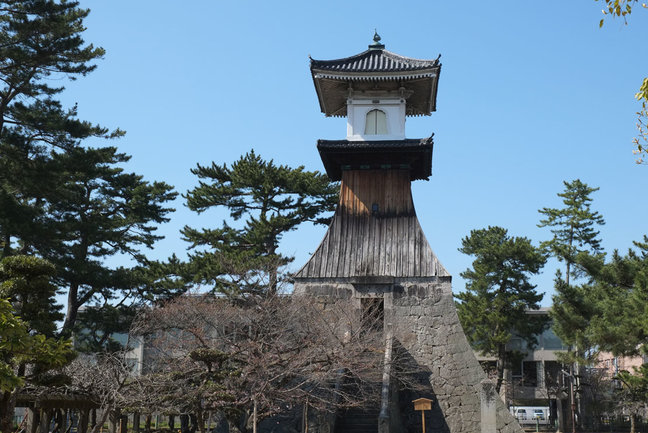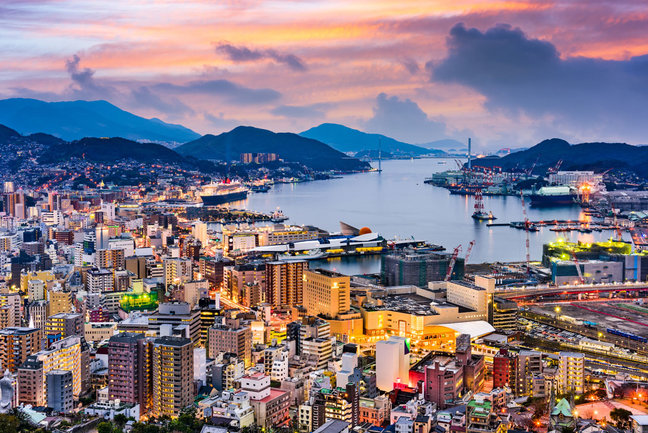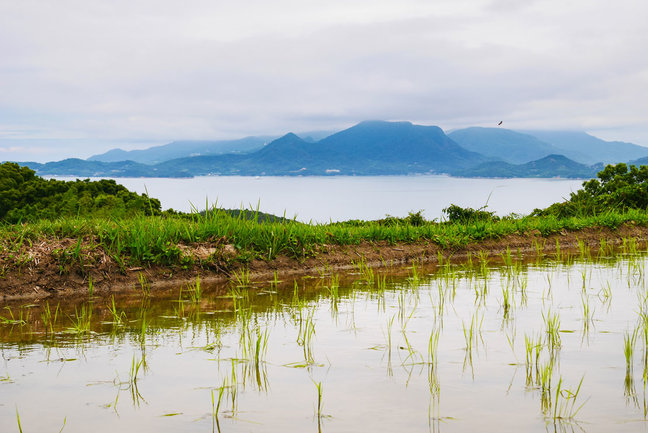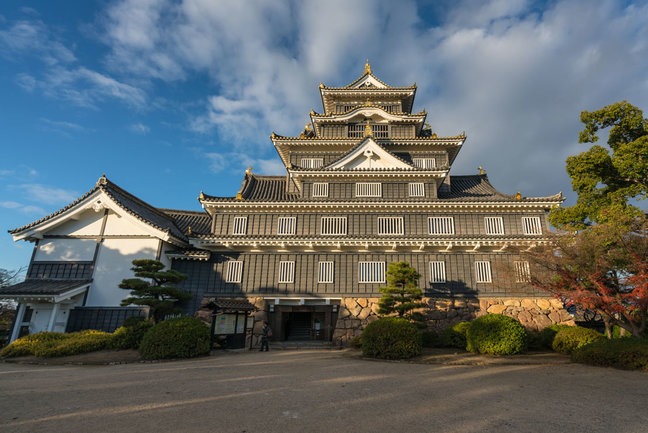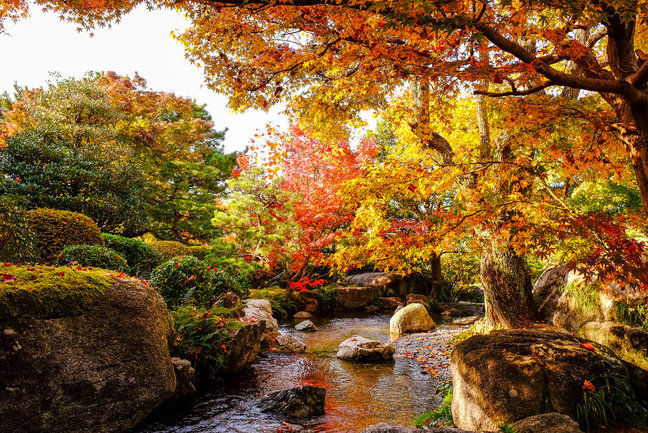Please enter your username and password to logon to the member pages

Kyushu , Shikoku Discovery tour
Kyushu , Shikoku Discovery tour Overview
Kyushu and Shikoku Discovery tour Discover the hidden treasures of Southern Japan. Begin your discovering tour with a stay in UNESCO-heritage Kyoto before travelling to Shikoku Island to explore arts and handicrafts villages, ancient pilgrimage routes and nature.Then head to Kyushu Island to explore historic cities, ancient monuments and relax in a hot springs resort.
Best time to visit Japan: Spring (March to May) and Autumn (September to November)
Touring Style: Travel by train independently with a private local guide during the tours.
Prices are seasonal and start from GBP 2055 per person, minimum of 2 travelling and based on standard hotels. International airfares are extra. Japan experiences dramatic pricing fluctuations based on Festivals, domestic holidays and in some instances on weekends. Please ask us for an individual quote.
See Shikoku’s cultural villages Explore Edo-era heritage buildings in Shikoku village, the museums of Naoshima and the castle town of Takamatsu.
Discover Kyushu’s vibrant towns Visit Nagasaki, Fukuoka and Osaka, three towns on Kyushu Island where tradition and modernity go hand-in-hand.
Explore historic Nagasaki Walk along cobblestone streets and admire the shop houses, churches, gardens and more that echo of the town’s trading past.
Day 1: Arrival in Kyoto
Upon arrival in Kansai International Airport, take the pre-arranged shuttle to your hotel.
The rest of the day is at leisure.
Overnight in Kyoto
Day 2: A cultural experience in Kyoto
Be immersed in Japanese culture with this cultural experience in Kyoto. Start the day with a visit to a machiya, a traditional wooden townhouse found throughout Kyoto. Take a tour of the beautifully restored house, learning about its architecture and history.
Then slip into a kimono, the iconic traditional Japanese garment. Meet a local tea master for a traditional ceremony. Watch and learn as the master brews and services tea using slow, deliberate movements steeped in spirituality and ritual. Enjoy a cup of the bitter tea along with traditional sweet treats.
Continue your cultural experience with an introductory course in origami, the Japanese art of paper folding. Under the guidance of a local artist, learn the secrets behind creating beautiful decorations and images with simple pieces of paper.
Continue to explore Kyoto’s charming streets.
Overnight in Kyoto
Day 3: Self guided tour of Kyoto
Begin the day with a visit to Nijo Castle, an ornamental castle that was originally built to serve as the private villa of a powerful feudal lord. The main building was completed in the early 1600s and has since then been known for its Momoyama-style architecture, decorated sliding doors, and “chirping nightingale” floors.
Next on the list is the serene Ryoan-ji Temple, which is famous for its well-maintained rock garden and known to be the home of the Myoshinji School of the Rinzai Buddhist sect.
Just a short distance from Ryoan-ji is the stunning golden pavilion collectively known as Kinkaku-ji Temple. The temple grounds are relatively smaller than that of most temples and shrines in Kyoto, but what is undoubtedly impressive is the pavilion that is completely covered in handmade gold leaf.
Continue your Kyoto tour with a visit to Kiyomizu-dera Temple. The view from the 13-metre high building is indeed breath-taking and the fact that this veranda was built without using any nails or joiners is quite unbelievable. Take a stroll along the busy streets of Higashiyama district, a collection of narrow alleyways lined with local stores, souvenir shops, small eateries, and even pottery centres.
Overnight in Kyoto
Day 4: Travel to Takamatsu
Head to Shikoku, one of the four main islands in Japan located between the Seto Inland Sea and the Pacific Ocean.
Shikoku is a popular destination for pilgrimage tours and its numerous temples and shrines, as well as valleys, gorges, and mountains.
The first stop is Takamatsu, the gateway to the neighbouring art islands such as Naoshima and Teshima.
Suggested Self-Guided Itinerary:
Head to Ritsurin Park, one of the designated Special Places of Scenic Beauty in Japan, set against Mt. Shiun featuring thirteen man-made hills, six ponds, oriental bridges, and a wide variety of trees and flowers. Enjoy an afternoon tea at Kikugetsu-tei, a teahouse set right in the middle of the park.
Overnight in Takamatsu.
JR Kyoto Station to JR Takamatsu Station: 2 hours
Day 5: Visit the neighbouring islands of Naoshima and Shodoshima
Today is a self-guided day.
Take a ferry to the neighbouring islands always featured in the Setouchi Triennale festival.
Naoshima - is a small art island where you can find contemporary museums and artworks such as the Chichu Art Museum, the Lee Ufan Museum, the Art House Project, the Ando Museum, and Yayoi Kusama’s red and yellow pumpkins.
Distance and journey time (approximation) - Takamatsu Port to Miyanoura Port: 50 min
Teshima, a rural island in the Seto Inland Sea, with rice paddies and stunning coastlines, is mostly known for its exhibitions of contemporary art and the magnificent architecture of the Teshima Art Museum.
Distance and journey time (approximation): Takamatsu Port to Ieura Port: 35-50 min
Shodoshima, the second largest island in the region, is known as the birthplace of olive production in the country. Main attractions on the island include the Olive Park, the Kankakei Gorge, and the Angle Road. Access to the island can be via one of the 2 main ports, Tonosho or Kusakabe, and getting around by rental car is the most convenient option.
Distance and journey time (approximation):Takamatsu Port to Tonosho Port or Kusakabe Port: 60 min
Overnight in Takamatsu
Day 6: Travel to Kotohira famous for its mountain temple
Today is a self-guided day.
Travel by train to Kotohira, famous for its mountain temple.
Suggested Self-Guided Itinerary:
Leave your bags at the ryokan. Start the hike up Kompira-san, a Shinto-and-Buddhist complex that holds the main shrine for the Shinto god of seafarers. Situated along the slopes of Mt. Zozu, the shrine can only be accessed via a long and steep staircase with 1,368 stone steps in total. Most visitors only make it up to the main hall (after 785 steps), but for those who would like to see the inner hall, a remaining 583 steps would be needed (approx. 45-minute hike).
Overnight in Kotohira
JR Takamatsu Station to JR Kotohira Station: 75 min
Day 7: Take the train to Matsuyama to visit the castle and enjoy a hot spring bath Today is a self-guided day.
Head to Ehime prefecture on the northwest of Shikoku. Ehime is known for its cycling tours, pilgrimage routes, and hot spring resort.
Self-Guided Itinerary:
Start your sightseeing with a visit to Matsuyama Castle, one of the only twelve remaining original castles in Japan. With around 200 cherry blossom trees, the castle grounds serve as a good spot for sakura-viewing in spring. It is located on top of Mt. Katsuyama, offering a panoramic view of the city and the nearby Seto Inland Sea, and can be accessed via ropeway or chairlift.
Later in the afternoon, stop by the Dogo Onsen Honkan, a large, wooden facility that is already more than a century old. After a soothing bath, stroll around the resort, passing through the lively shopping arcade just across Dogo Onsen Honkan.
Overnight in Matsuyama
JR Kotohira Station to JR Matsuyama Station: 75 min
Day 8: Travel by train to Okayama
Today is a self-guided day.
Leave Shikoku behind and head to Okayama.
Suggested Self-Guided Itinerary :
This morning, visit Ishite-ji, the 51st post temple along the Shikoku Pilgrimage route. Ishite-ji is claimed to be the most impressive temple among the 88 Buddhist temples in Shikoku, with its Niomon entrance gate and its curious-looking inner shrine.
Distance and journey time (approximation): Dogo Onsen to Ishite-ji Temple: 20 min
Afterwards, take the train to Okayama.
Suggested Self-Guided Itinerary :
Take the short train ride to Kurashiki, famous for its well-preserved old houses, depots, and canals, which can all be found in the nostalgic Kurashiki Bikan and Canal Area.
Overnight in Okayama
JR Matsuyama Station to JR Okayama Station: 2.5 hours
JR Okayama Station to JR Kurashiki: 15 min
Day 9: Take the train to Kumamoto on Kyushu Island
Today is a self-guided day.
Suggested Self-Guided Itinerary:
Spend the morning visiting Okayama Castle, which is also known as the “Crow Castle” for its black exterior. From the castle, proceed to Korakuen Garden, known as one of the Three Great Gardens of Japan and a designated Special Place of Scenic Beauty.
In the afternoon, catch the train to Kumamoto, located on a plain surrounded by Ariake Sea on the west and the Kyushu Central Mountains on the left.
Overnight in Kumamoto
JR Okayama Station to JR Kumamoto: 2.5 h
Day 10: Trekking on Mt Daikanbo or visit the onsen town of Beppu
Today is a self-guided day.
Explore central Kumamoto on foot or by tram to see Kumamoto Castle and Shuizen-ji Joju-en Garden. For those interested in nature, we suggest an excursion to the Mt. Aso area.
Suggested Self-Guide Itinerary (1):
This is a chance to do some trekking. Get an early start and travel by train to Mt. Aso, a small rural town surrounded by five peaks, namely, Kishima-dake, Eboshi-dake, Naka-dake, Taka-dake, and Neko-dake.
National Park Aso Daikanbo - This is the ideal starting point for trekking on Mt. Daikanbo, the perfect spot from where the five peaks in Aso can be viewed.
Aso Shrine is one of Japan’s many Shinto shrines and has around 2,500 years of history. Strolling around the shrine, visit traditional shops and taste the “prized water” from one of the 20 fountains and water sources in the area.
Distance and journey time (approximation) JR Kumamoto Station JR Aso Station: 70 min
Alternatively visit the onsen town of Beppu to see the nine Jigoku (“hells”), unique hot springs that are only good for viewing and not for bathing due to their extreme temperatures.
Distance and journey time (approximation) JR Kumamoto Station JR Beppu Station: 2.5 h
Overnight in Kumamoto
Day 11: Travel to Nagasaki for one of the best night views in the world
Today is a self-guided day.
Head to Nagasaki. Aside from its tragic past, Nagasaki is also known for being the centre of Portuguese, Dutch, and other European influences from the 16th to 19th century.
Suggested Self-Guided Itinerary:
Head to Minami-Yamatemachi to visit the Oura Church or the Glover Garden. Walk up the Dutch Slope, a place of hills rising from the deep, U-shaped harbour of houses perched on terraced slopes and of small streets and distinctive neighbourhoods. In the evening, travel to the top of Mt. Inasa for one of the best night views in the world. Alternatively, visit the oldest Chinatown in the country to sample some of the regional dishes including the famous Nagasaki chanpon, a noodle soup with heavily influenced by Chinese cuisine.
Overnight in Nagasaki
JR Kumamoto Station JR Nagasaki Station: 2.5 hours
Day 12: Nagasaki sightseeing before heading to Fukouka
Today is a self-guided day.
Suggested Self-Guided Itinerary :
Visit the Nagasaki Peace Memorial Park and Museum. Around noon, take the train to Fukuoka. In the afternoon visit Shofukuji Temple, the first Buddhist temple in Japan. Continue to Nakasu Island and sample some of Fukuoka’s delicious street food at one of its open-air food stands lined up along the river. Some of the local delicacies such as Hakata ramen, gyoza, and motsunabe (hot pot dish) can be tasted here.
Overnight in Fukuoka.
JR Nagasaki Station to JR Hakata Station: 2 h
Day 13: Fukouka sightseeing
Today is a self-guided day.
Suggested Self-Guided Itinerary:
Start with a morning visit to Kushida-jinja, the most important shrine in the city. Next continue to the busy Yanagibashi Rengo Ichiba Fish Market, which has its origins in 1916. Afterwards, head to Ohori Park, located at the heart of Fukuoka to admire its beautiful pond.
In the evening, we suggest visiting Fukuoka Tower, standing 234 metres tall and offering great views of the city, the shores of Momochi Seaside Park, and the islands nearby.
Overnight in Fukuoka
Day 14: Savour Osaka's street food
At leisure in Fukuoka before taking the bullet train to Osaka.
This evening, participate in a unique street food tour for an introduction to Osaka’s cuisine.
Meet your food expert and head to in Dotonbori and enjoy about 4 different venues during the tour.
tart the experience by discovering Osaka’s best-loved dishes in one of the liveliest areas in town. Dive into some narrow, hidden alleyways to discover all the local delicacies Osaka has to offer. Taste some of the staples of Osaka’s soul-food such as fresh Okonomiyaki, prepared on the spot, and Takoyaki, which have been featured in the Michelin guide. Continue the gourmet journey with fresh sushi and a local brew, plus the opportunity to interact with the sushi chef.
Overnight in Osaka.
JR Fukuoka Station to Shin-Osaka Station: 2.5 h
Day 15: Departure from Osaka
This itinerary is an idea of what is possible. Please contact us for your individual tailor-made tour.

